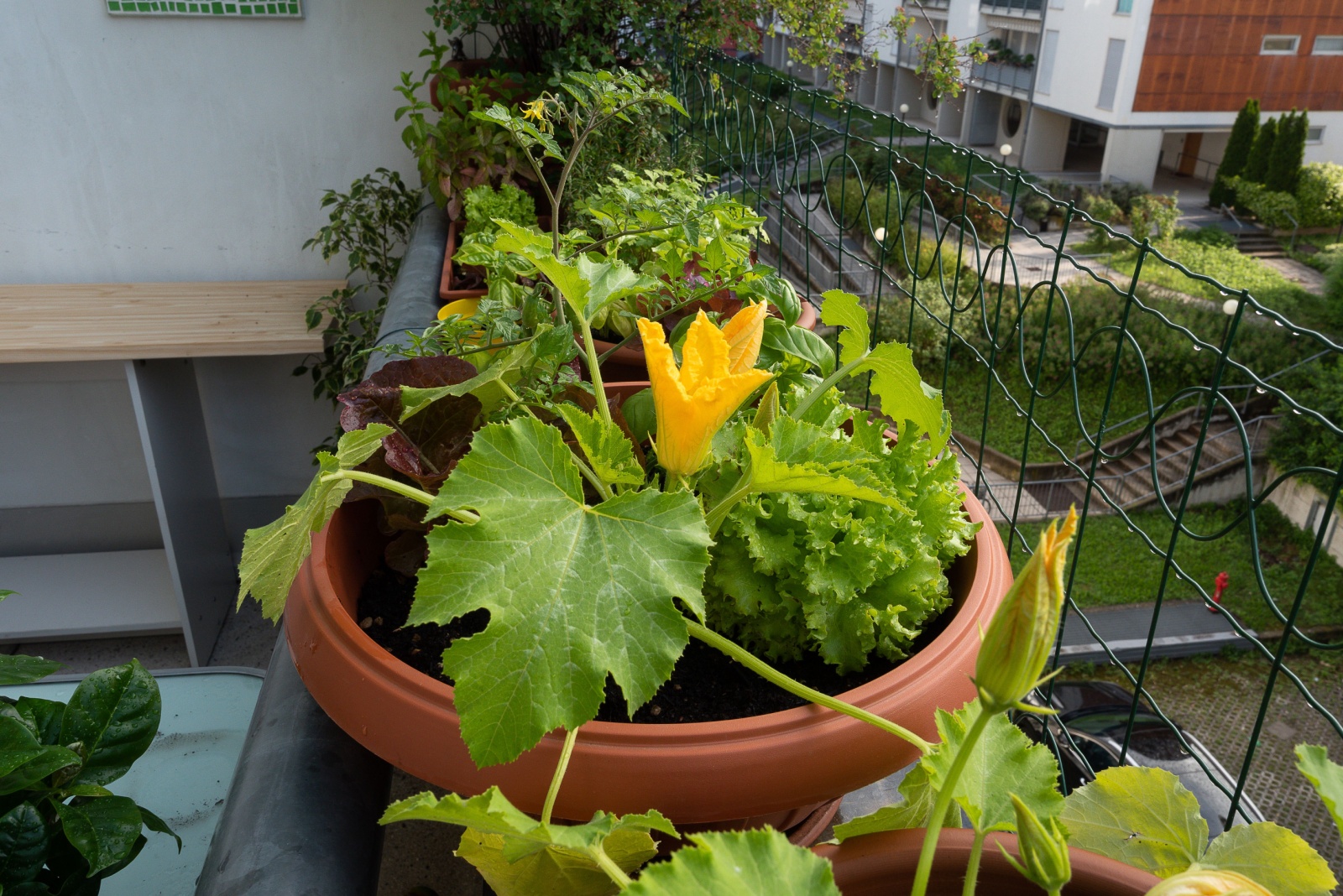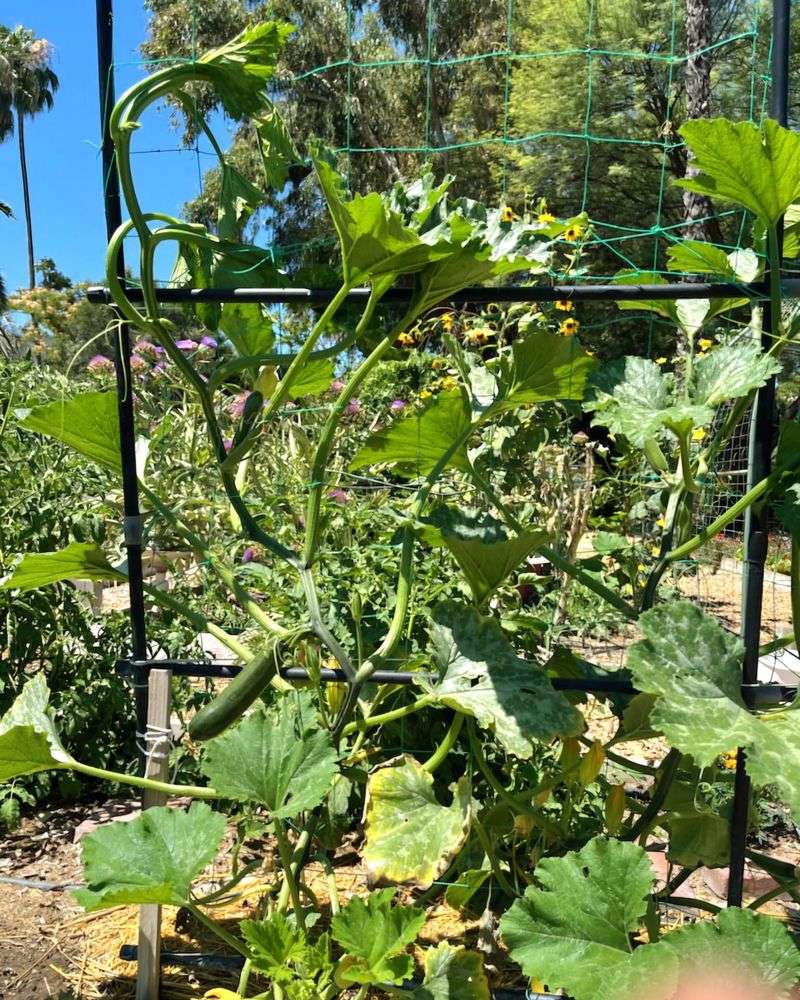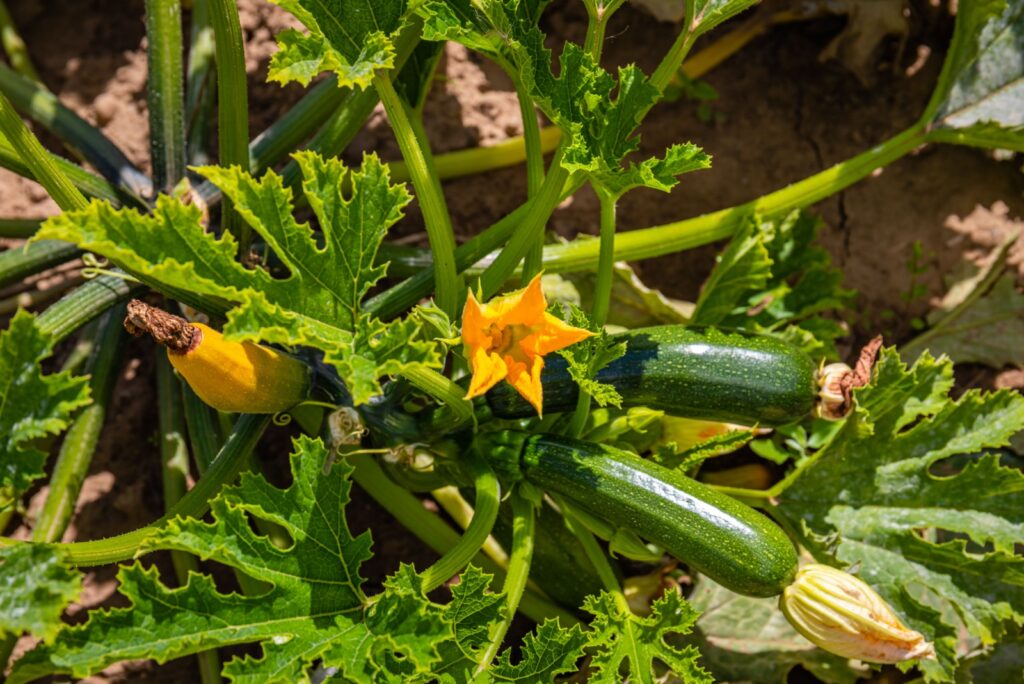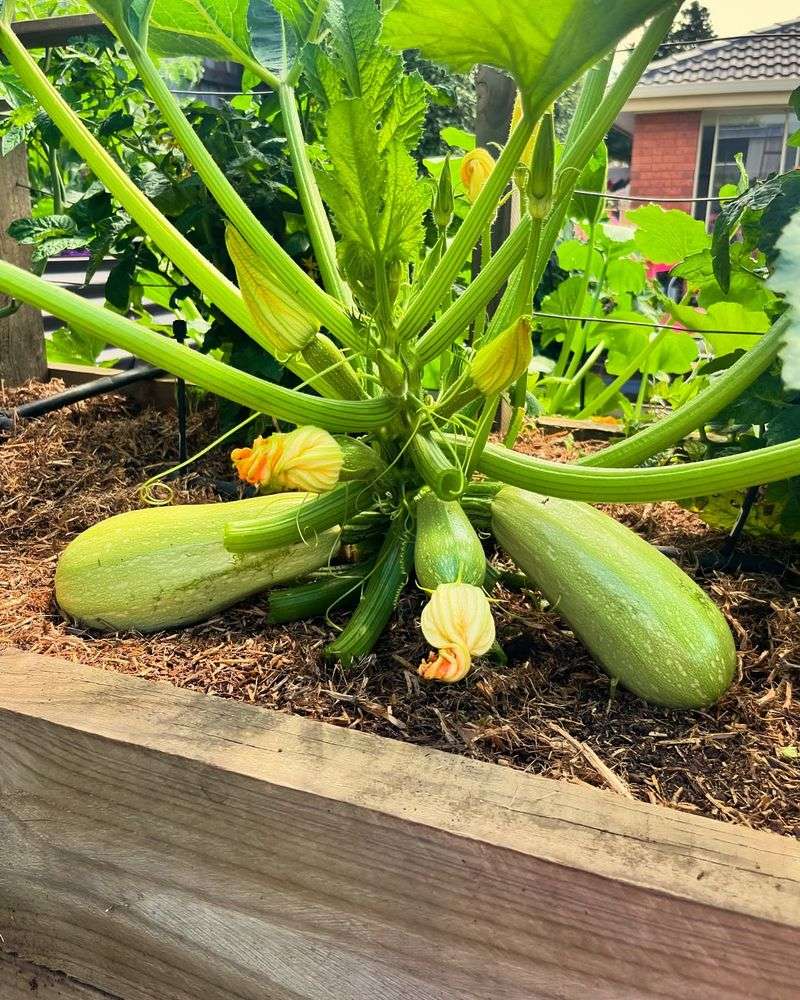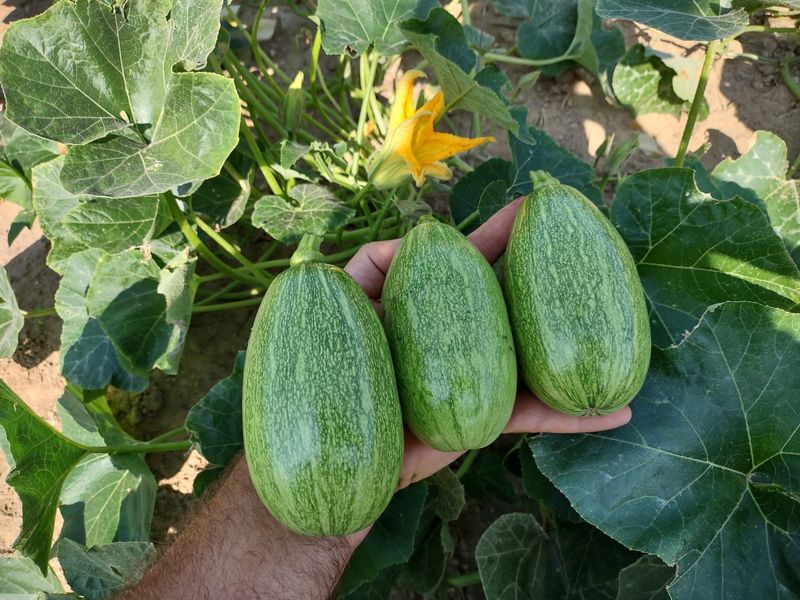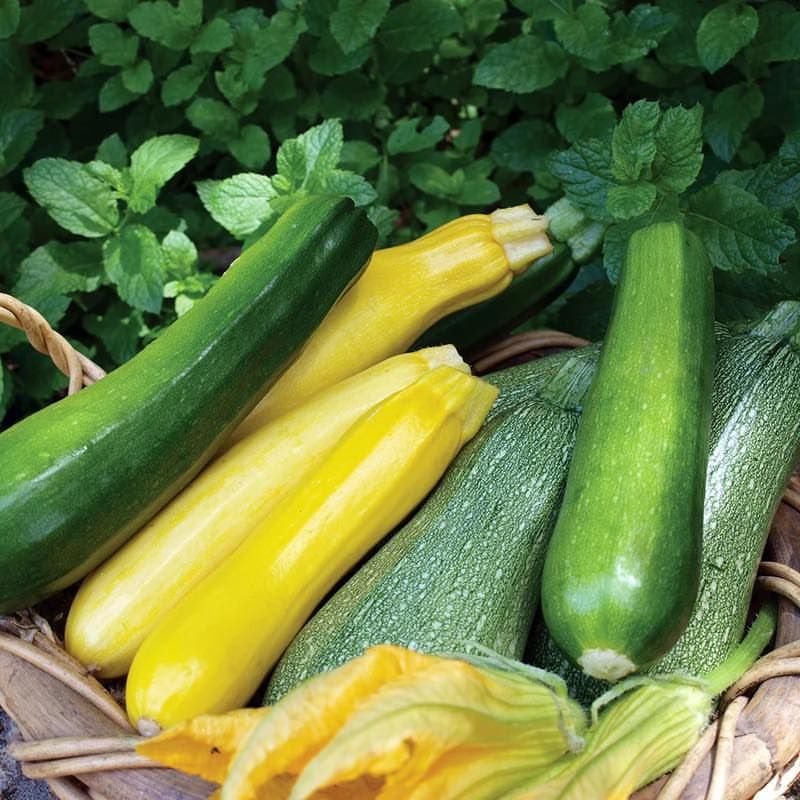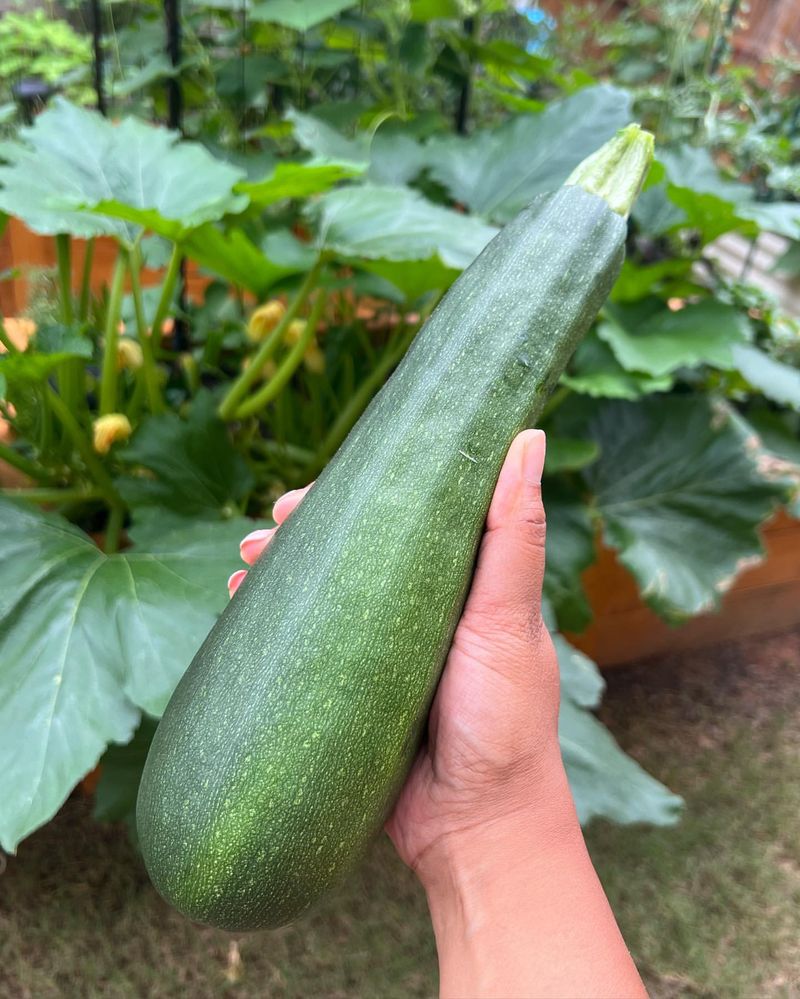Growing zucchini in California can be rewarding, but deciding between ground planting or containers isn’t always straightforward. Your climate zone, available space, and gardening goals all affect which method works best.
California’s diverse growing conditions mean what works in foggy San Francisco might not be ideal for sunny San Diego.
1. Consider Your Local Climate Zone
California’s climate varies dramatically from coastal fog belts to scorching inland valleys. Ground planting works wonderfully in moderate regions like the Central Coast, where soil warms gradually and retains moisture.
Containers shine in cooler coastal areas because pots heat up faster than ground soil. The portability of containers lets you chase the sun as seasons change, extending your growing season by weeks.
2. Space Limitations Matter
Urban gardeners with tiny yards or apartment dwellers rejoice! Zucchini adapts beautifully to container life when space is tight. A 5-gallon pot can support one plant, giving you plenty of summer squash without sacrificing your entire yard.
Ground planting allows zucchini vines to spread naturally, which typically yields more fruit per plant. The extensive root system can access nutrients from a larger soil volume.
3. Soil Quality Makes a Difference
Many California regions suffer from heavy clay or sandy soils that zucchini plants dislike. Container growing lets you create the perfect soil mix from scratch – typically equal parts compost, vermiculite, and peat moss.
Clay-heavy yards benefit from raised beds or containers. Sandy coastal soils often drain too quickly for thirsty zucchini plants, making moisture-retaining pots a smarter choice.
4. Water Conservation Strategies
During California’s frequent droughts, water-wise gardening becomes essential. Surprisingly, containers often need more frequent watering than ground plantings, especially during heat waves.
Ground-planted zucchini develops deeper roots that access subsurface moisture. Adding mulch around in-ground plants dramatically reduces water needs. Self-watering containers with reservoirs offer an efficient compromise for water conservation.
5. Pest Management Approaches
Ground-planted zucchini faces more pest challenges from California’s diverse insect population. Squash bugs, cucumber beetles, and soil nematodes easily find plants growing directly in garden beds.
Elevated containers create a physical barrier against crawling pests and soil-borne diseases. Fresh potting soil starts disease-free, unlike garden soil that may harbor pathogens from previous seasons. The isolation of containers makes organic pest management significantly easier.
6. Seasonal Temperature Fluctuations
Zucchini thrives when soil temperatures stay between 70-90°F. Container soil heats up faster in spring, allowing earlier planting in cooler regions like Northern California.
Summer heat poses challenges too. Ground-planted zucchini withstands temperature spikes better since soil temperature changes more slowly than in containers. During Central Valley heat waves, ground plantings often outperform pots that can quickly overheat.
7. Yield Expectations and Harvest Timing
Ground-planted zucchini typically produces more fruit per plant thanks to unrestricted root growth and natural soil ecosystems. The extended root system accesses nutrients from a larger area, supporting heavier production.
Container zucchini may yield less per plant but often produces earlier harvests. For California gardeners wanting the longest possible harvest season, try both methods! Plant some in containers for early yields, then ground-plant for mid-summer abundance.

